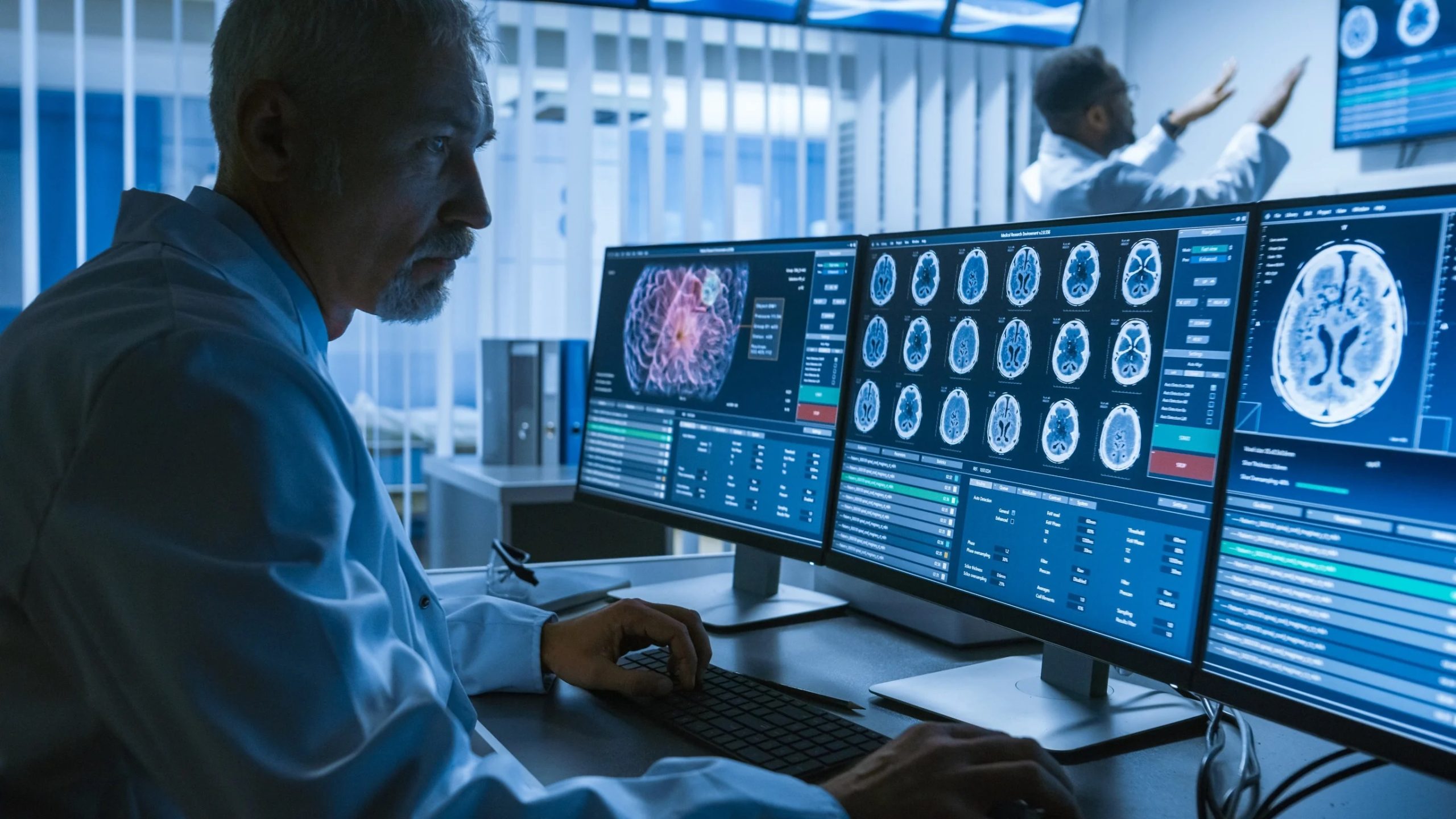
UltraLab, ScanLabMR’s latest software feature, seamlessly merges image contrast and spatial resolution, providing a unified interface for MRI education. With compatibility across vendors, users can select preferences, adapting the terminology to their chosen vendor. This breakthrough addresses the industry-wide challenge of parameter manipulation, empowering students to visualize and comprehend the impact of various parameters on MRI images. UltraLab is a game-changing tool, that simplifies complex concepts and promotes an inclusive learning environment.
ScanLabMR introduces UltraLab, a transformative software feature that redefines MRI education. By integrating key concepts and parameter manipulation into a unified interface, UltraLab offers an enhanced learning experience. Tailored for educational partners and clients, it allows users to choose their preferred MRI vendor and customize voxel size and field strength. Breaking down the stigma associated with parameter manipulation, UltraLab introduces industry-first features that empower users to understand and visualize the impact of parameters on image quality. This major enhancement signifies a significant step forward in advancing MRI education.
Designed with educational objectives in mind, UltraLab promises an enhanced user experience for ScanLabMR’s educational partners and clients. The primary goal is to empower students to master crucial MRI concepts and elevate the overall quality of MRI education.
One of the standout features of UltraLab is its flexibility regarding MRI vendors. Users now have the freedom to choose their preferred vendor, triggering the interface to adopt the parameter terminology and behavior specific to that chosen vendor. Additionally, UltraLab allows users to customize their experience by selecting their desired voxel size and field strength. This customization enables the generation of images based on the chosen spatial resolution and the T1 recovery time differences associated with the selected field strength.
A common challenge faced by students and MRI operators is the lack of clarity on how various parameters impact imaging outcomes. UltraLab tackles this issue head-on by introducing a user-friendly interface. Users can easily select from Signal-to-Noise Ratio (SNR), Time, Spatial Resolution, and RF checkboxes, providing a visual representation of how each parameter influences the imaging process.
These pioneering features within UltraLab signify a monumental step forward in dispelling the complexity often associated with parameter manipulation in MRI. Moreover, the software’s adaptability across different MRI vendors and field strengths contributes to breaking down barriers and promoting a standardized understanding of MRI concepts.
Matthew Hayes, the President and Creator of ScanLabMR expressed his enthusiasm for UltraLab, stating, “UltraLab is a major enhancement to the ScanLabMR software and comes from almost one-and-a-half years of careful research and product development. It’s a game-changing development in MRI education, and we look forward to seeing how our clients benefit from its release.”
The release of UltraLab is not merely an incremental improvement; it represents a comprehensive approach to addressing longstanding challenges in MRI education. By seamlessly integrating image contrast and spatial resolution within a single interface, UltraLab fosters a holistic understanding of MRI concepts among students and professionals alike.
One of the standout features is the ability for users to choose their preferred MRI vendor. This feature ensures that the terminology and behavior within the interface align with the selected vendor, offering a tailored and vendor-specific educational experience. Such customization not only enhances user engagement but also prepares students for the diversity of MRI equipment they may encounter in their future careers.
The option to select voxel size and field strength is another key feature of UltraLab. This customization empowers users to generate images based on their chosen spatial resolution and field strength, taking into account the nuanced differences in T1 recovery times. By allowing users to explore these parameters, UltraLab transforms the learning experience into a dynamic and interactive process.
Perhaps the most significant impact of UltraLab is its role in demystifying the complexities of parameter manipulation. Many students and MRI operators struggle to grasp how altering various parameters affects the quality of their images. UltraLab addresses this challenge by introducing a clear and intuitive interface, where users can visualize and comprehend the impact of Signal-to-Noise Ratio, Time, Spatial Resolution, and RF on their images.
This approach not only promotes a deeper understanding of MRI concepts but also contributes to standardizing the learning process across different vendors and field strengths. The industry-first features within UltraLab mark a departure from traditional educational approaches, ushering in an era where students can navigate the intricacies of MRI with confidence and proficiency.
Matthew Hayes’ acknowledgment of UltraLab as a game-changing development in MRI education reflects the software’s transformative potential. Developed over nearly one-and-a-half years, UltraLab represents a culmination of meticulous research and product development aimed at revolutionizing the educational landscape for MRI professionals.
Overall, UltraLab by ScanLabMR is a groundbreaking development in MRI education. With a focus on integration and user experience, this software feature sets a new standard. The compatibility with various vendors, customizable options, and intuitive visualization of parameters marks a transformative shift in the landscape of MRI learning. UltraLab not only simplifies complex concepts but also encourages hands-on exploration, empowering students and MRI professionals alike. As the industry embraces this game-changing tool, ScanLabMR anticipates the widespread benefits and positive impact UltraLab will have on the future of MRI education.




